Rheumatology research has had a busy and productive year. Clinical advances typically receive the most attention, but every new clinical development begins as basic science, often in rare diseases.

Anne Davidson, MBBS, FRACP, Professor of Molecular Medicine, Feinstein Institutes for Medical Research at the Donald and Barbara Zucker School of Medicine at Hofstra Northwell, discussed one of these rare diseases as she presented a curated selection of basic science papers and concepts in rheumatology from the past year on Sunday at ACR Convergence during the Year in Review. Recorded sessions at ACR Convergence 2025, including the Year in Review, will be available on demand to all registered meeting participants within 72 hours of the live presentation through October 31, 2026, by logging into the meeting website.
Basic Science Year in Review
Coatomer protein complex subunit alpha (COPA) syndrome is a rare childhood autoimmune disease characterized by interstitial lung disease and inflammatory arthritis with a high interferon signature. The syndrome stems from mutations to a protein responsible for trafficking between the endoplasmic reticulum and the Golgi apparatus.
“When COPA transport is defective, STING (stimulator of interferon genes) accumulates in the endoplasmic reticulum, where it causes excessive signaling and chronic interferon activation,” Dr. Davidson explained. “Interestingly, about 20% of individuals carrying COPA mutations show no disease, raising the question of the reasons for this incomplete penetrance.”
The answer is a common benign polymorphism to STING that blocks the pathogenic effect of the COPA mutation. A single copy of this polymorphism is sufficient to prevent the usual pathogenic effects of COPA mutations. Gene editing could offer similar protective effects.
Dr. Davidson also reported on how the development of mRNA vaccines against COVID-19, which focused attention on the innate immunogenicity of nucleic acids, continues to affect medicine. Physiologic processes can also modify RNA to modulate immunogenicity, emphasizing the potential for RNA as a therapeutic platform.
Two approaches using chimeric antigen receptor T cell (CAR-T) mRNA are already in development. A nanoparticle targeting CD8 reduced delivery to the liver while enhancing on-target delivery with improved biodegradability and tolerability with less immunogenicity. An RNA-encoding CD19 CAR has been validated for killing B cells. Both approaches offer off-the-shelf CAR-T treatment with no preconditioning and mild toxicity, Dr. Davidson said.
Predicting rheumatoid arthritis (RA) risk, progression, and treatment is also advancing, she explained. The ALTRA Cohort followed asymptomatic individuals positive for autoantibodies, about a third of whom developed RA, using single-cell proteomics. Researchers identified several immune activation signatures, including activation of naïve B and T cells and an expansion of T follicular helper cells.
Abatacept can normalize these immune activation signatures, while tumor necrosis factor (TNF) inhibitors do not. If individuals with preclinical RA can be identified, abatacept could be a useful treatment approach.
Autoantibodies can be internalized by cells to inhibit specific cell functions performed by their autoantigens, which suggests that autoantibodies could be used to target disease at the cellular level. DX3, a lupus antinuclear antibody that preferentially translocates to microenvironments enriched in nucleic acids released by malignant and necrotic tissue, can be used to deliver a payload of cytotoxic drugs to malignant cells.
Artificial intelligence (AI) can accelerate drug development, Dr. Davidson noted, citing a novel small-molecule TRAF2- and Nck-interacting kinase (TNIK) inhibitor that targets fibrosis going from concept to phase 2 in just 18 months. BioMapAI has generated novel correlations and hypotheses in myalgic encephalomyelitis/chronic fatigue syndrome in the tryptophan and other pathways. But AI is only as good as the data on which it is trained.
“It is our responsibility as researchers, reviewers, and educated readers to ensure that these data are accurate, reproducible, and meaningful for true AI-driven innovation to occur,” Dr. Davidson said. “AI’s power depends on the quality of the data we generate.”
Clinical Science Year in Review

Data also has the power to shift clinical practice. A cohort study of nearly 5,000 RA patients on conventional or biologic disease-modifying antirheumatic drugs (DMARDs) found that routine lab testing may not be helpful after the first few months of treatment.
More than 90% of lab results were normal over five years, and abnormal results were common, said Bryant England, MD, PhD, Associate Professor of Medicine at the University of Nebraska Medical Center and VA Nebraska-Western Iowa Health Care System.
Of the 447 new abnormal results identified across more than 300,000 tests, only 3% had not been seen previously or had no other indications. Only 12% appear to have been DMARD-related.
“In this study, patients had to be on DMARDs for six months, so we’re not talking about new starts on therapy,” Dr. England said. “We should continue to monitor that closely. But this is pretty striking data that makes us question whether we need to continue this [monitoring] long term.”
Dr. England offered similar cautions on vagal nerve stimulation (VNS) for RA. The surgically implanted SetPoint System received U.S. Food and Drug Administration (FDA) approval in August. The ACR20 response rates were modest — 35% for those who had VNS turned on and 24% for sham VNS, he noted. There is no long-term data or information on whether the device is disease-modifying.
Dr. England also highlighted sonelokimab, an interleukin-17A/17F (IL-17A/17F)-inhibiting nanobody that showed promising results in phase 2 trials. Both doses showed significantly better ACR50 response versus placebo, 46% versus 20% at 12 weeks, and better PASI90 scores. Two phase 3 trials are in process.
The biggest change in clinical science may be a name. Sjögren’s syndrome is out, Sjögren’s disease is in.
“The name has caught up with the science,” Dr. England said. “This is not only great for our field, it is going to bring a lot of hope to our patients.”
Sjögren’s disease also has a new diagnostic indicator in development. Salivary autoantibodies appear to be as accurate as serum autoantibodies in diagnosing. Early findings still need to be validated in larger populations.
Antiphospholipid syndrome (APS) is a leading cause of adverse pregnancy outcomes. An ongoing trial of the TNF inhibitor certolizumab showed strong reductions in adverse outcomes, 17% versus up to 64% for historical controls, Dr. England said. Most children, 93%, survived to hospital discharge.
Lupus treatment is also changing. Obinutuzumab was approved in October for lupus nephritis with a 46.4% complete renal response. Fewer than 20% of obinutuzumab patients died or had a renal-related event versus 3% for placebo. A separate phase 3 trial is exploring extrarenal effects.
A phase 3 trial of upadacitinib for giant cell arteritis demonstrated significant improvement compared with placebo. A follow-up period found that patients quickly relapsed when the drug was stopped, suggesting that long-term therapy is appropriate.
Dr. England also discussed an open-label comparison of prednisone versus methotrexate for pulmonary sarcoidosis that found similar changes in forced vital capacity (FVC) over 24 weeks. He noted that the prednisone arm improved more quickly than the methotrexate arm.
Don’t Miss a Session

If you can’t make it to a live session during ACR Convergence 2025, make plans to watch the replay. All registered participants receive on-demand access to scientific sessions after the meeting through October 31, 2026.
